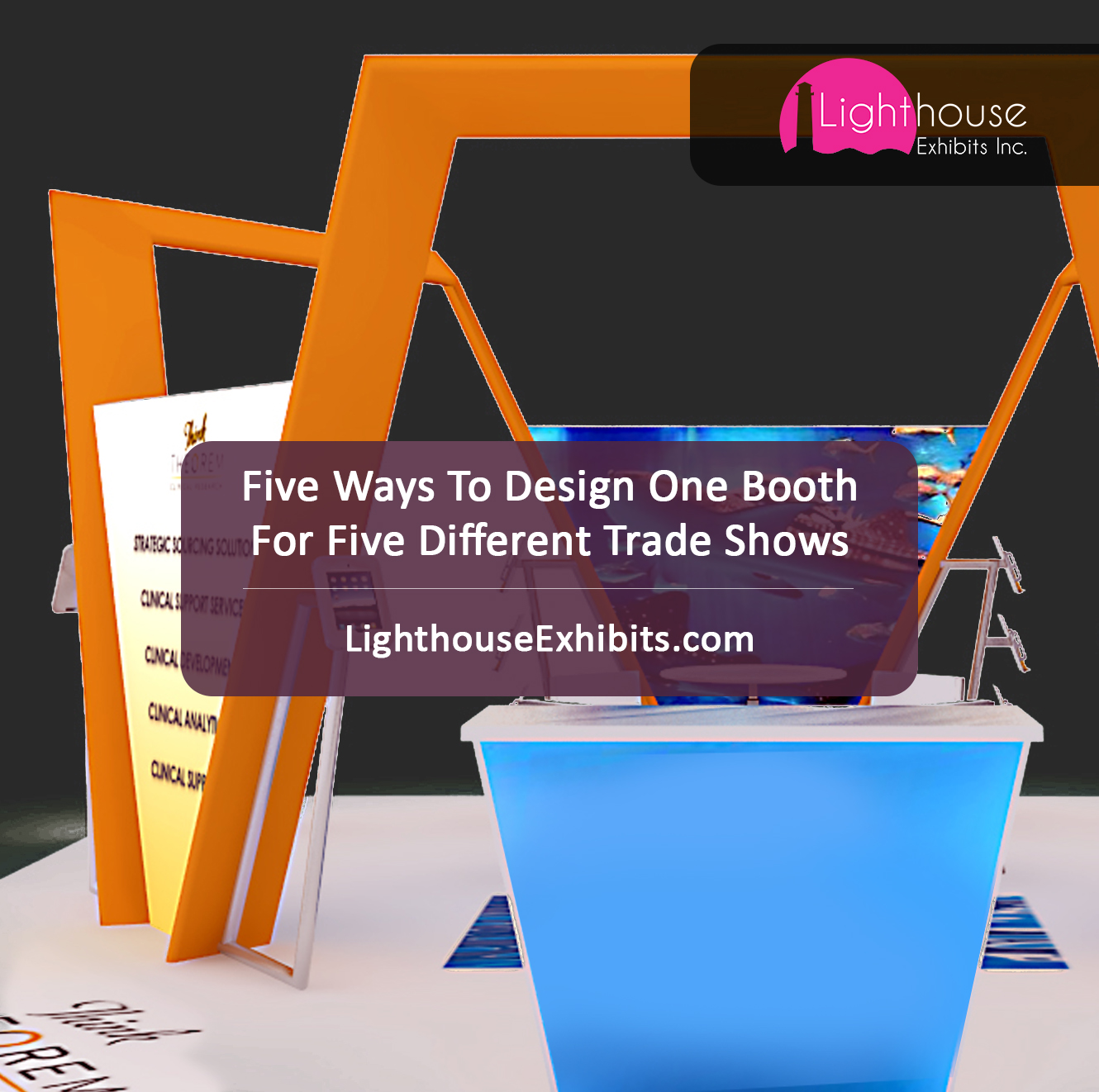Five Ways To Design One Booth For Five Different Trade Shows


If you’re attending multiple trade shows this year and don’t have the budget for multiple booths, don’t worry. You don’t need to invest in a different booth for each trade show. You just need one well-designed booth that is adaptable to a 10×10, a corner space, a large island setup, or whatever space you need.
Our booth designers can help you make smart choices upfront so your booth can adapt to any show floor plan without extra costs, rebuilds, or stress. Here are some of our tips for designing a booth that keeps your brand message consistent and high quality, but flexible for all your events:
1. Start With A Flexible Foundation That Travels Well
Choose hardware and structural components that are lightweight, easy to assemble, and compatible with standard booth sizes like 10×10, 10×20, and 20×20. Avoid custom builds that only fit one layout. Prioritize materials that hold up over time and represent your brand’s quality. Your walls, counters, and flooring should stay consistent across events. You just change what goes on top of them.
2. Design With Swappable Graphics And Messaging
Use SEG frames, magnetic panels, or slide-in rails so you can quickly change out graphics between shows. Your core branding will stay in place, but you can tailor your messaging for each audience. Interactive panels are also a strategic addition. Instead of reprinting graphics for every event, you can preload videos, product demos, or rotating slide shows. Simply swap the file, and your messaging is updated.
3. Plan For Different Layouts Without Rebuilding Everything
Design your booth with multiple floor plan options in mind. Can your back wall stand alone in a 10×10? Can your counters rotate to face different directions in a corner layout? Can your shelving units detach or reposition to accommodate different traffic flows? When you map this out early in the process, your booth team can quickly adjust for each show’s footprint without needing major redesigns or new parts.
4. Use Modular Elements To Scale Up Or Down
Modular booth components, such as free-standing kiosks, shelving, counters, and demo stations, allow you to adjust the scale of your presence. You can use all your elements at large expos, then streamline for smaller regional shows by removing pieces or relocating them. Your signage, lighting, and branding all stay consistent, but you can adjust to any floor plan.
5. Train Your Team To Adapt The Story, Not The Structure
Make sure your team knows how to work the booth, whether they’re in a tight 10×10 or a full 20×20. They should be able to maintain the same talking points, demo flow, and brand presence. Train them on where to stand, where the demo station goes, and where everything’s stored. A flexible booth only works if your team can carry that consistency from show to show.
If you want to design one booth that can work for every show you have this year, contact Lighthouse Exhibits. Our exhibit design team will help you make a booth that works for you.

